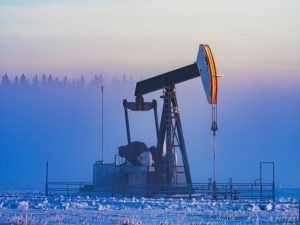 By Scott Seymour and Ari Pottens
By Scott Seymour and Ari Pottens
Canada has set arguably among the most formidable objectives of any nation with regards to decreasing emissions of the potent greenhouse fuel methane. Along with becoming a member of a worldwide coalition of nations pledging to cut back 30% of their methane emissions, Canada has additionally vowed to cut back oil and fuel sector emissions even additional, by 75%.
However how shut is Canada to reaching that aim? New analysis revealed this week within the journal Elementa reveals it’s nearly unimaginable to precisely reply that query with our present insurance policies.
Right here’s why.
Final 12 months, Canada’s environmental regulators (Setting and Local weather Change Canada) took steps to enhance its calculations for estimating how a lot air pollution completely different oil and fuel amenities emit. A part of this transformation meant relying extra on self-reported air pollution knowledge from oil and fuel firms, and fewer on laptop fashions — which have been identified to systematically underestimate emissions.
At first blush, this looks like a optimistic step. However sadly this may increasingly have the unintended impact of widening the hole between what’s mirrored in official authorities inventories and what scientists discover after they measure methane within the ambiance. That is largely as a result of firms usually are not precisely reporting their emissions.
Unreported air pollution: What new analysis reveals about Canada’s methane downside Click on To Tweet
For instance, earlier this 12 months, EDF commissioned an aerial survey of oil and fuel websites in Alberta to check emissions from flaring — the follow of burning away pure fuel, often from oil wells.
We have been shocked to see a lot of flares at effectively websites the place no flaring was reported. In actual fact, about 16% of flares couldn’t be traced again to emissions data. If these flares don’t present up within the official register then their air pollution gained’t both. That makes it extraordinarily tough to say with a lot certainty whether or not we’re assembly our methane targets.
This is only one of some ways during which Canada’s present framework for calculating methane air pollution isn’t correct. The formulation Canada makes use of assumes that oil and fuel firms are complying with federal and provincial reporting guidelines. However we all know primarily based on the authorities’s personal reporting that 30% of operators submit incomplete emissions data in accordance with the Alberta regulators.
So what does it imply for our local weather objectives when scientists discover air pollution that governments aren’t counting? It means we have to make two important adjustments.
Higher measurement-based knowledge assortment
Canada ought to use a nationwide emissions stock primarily based on actual, precise measurements versus laptop calculations and incomplete trade reporting. Trade-reported emissions might be a useful software, however provided that they’re correct. Firms must be required to often measure their emissions and regulators ought to then validate these stories and guarantee its inventories are primarily based on clear measurement knowledge.
It’s clear that ECCC must re-evaluate its course of for monitoring emissions in an effort to know whether or not it’s really assembly their 2025 objectives. It merely leaves an excessive amount of room for guess work and isn’t successfully accounting for its methane footprint.
Stronger emissions requirements and enforcement
To satisfy Canada’s formidable 75% emission discount aim, we’ll must not solely enhance the nationwide emissions stock, however we can even must strengthen and implement the prevailing requirements for controlling methane.
- Venting must be banned and routine flaring must be eradicated.
- Tools must be checked extra often for leaks and malfunctions.
- Firms must be held accountable for his or her air pollution by stronger enforcement.
- Firms want to switch high-emitting pneumatic pumps with cleaner, extra reasonably priced options.
Accurately assessing and controlling methane issues. Methane air pollution accounts for over 1 / 4 of worldwide warming we’re experiencing right this moment, however decreasing emissions — particularly from the oil and fuel trade — is among the quickest, most cost-effective, most impactful issues we will do to deal with local weather change and defend future generations.
Canada is true to ship a sign to the world that methane reductions are an vital piece of the local weather change puzzle. But it surely mustn’t additionally ship the false message that Canada’s present insurance policies are adequately addressing the issue. World leaders from throughout the globe will quickly be gathering on the COP27 local weather convention to sort out local weather change, and for giant oil and gas-producing nations, it’s completely important that these plans embody a greater system for monitoring, reporting and verifying emissions than what present insurance policies in Canada name for.






0 Comments